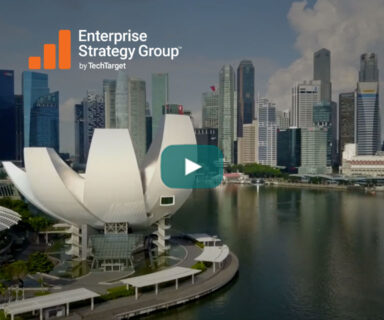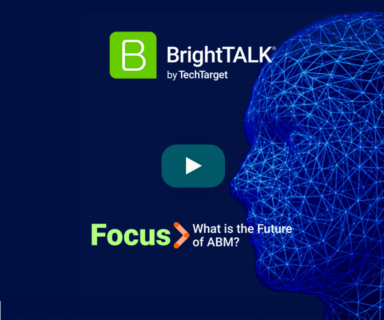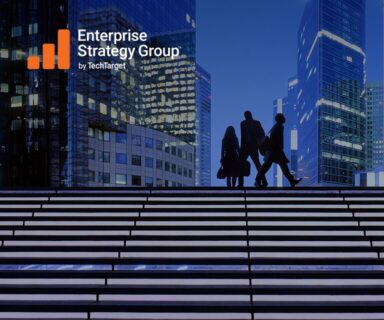Crafting Engaging Email Copy: Do’s and Don’ts

Welcome to the last installment of our three-part blog series, in which we explore how to strengthen your email marketing efforts. In parts one and two, we presented tips for creating subject lines and standout calls to action (CTAs). Now, we’re going to dive into strategies for developing email copy that will engage your readers: IT business professionals. As a marketing copywriter, I write emails for this audience every day. The following tips are informed by my experiences and those of my colleagues.
Before we delve into those tips, we must first consider the factors that make engaging IT professionals through email challenging. Along with being extremely busy, IT pros tend to be risk averse: they prioritize avoiding issues over seeking out unfamiliar opportunities. Given the many obstacles facing IT pros – straining budgets or proliferating threats, for example – their aversion to risk is perfectly understandable. But unfortunately, it does not work in your favor. So, how can you engage the seemingly un-engageable?
Tip #1: Provide insights about topics that matter to your audience (technical challenges, market changes, upcoming deadlines, etc.) in a direct, brief manner that avoids frills.
IT workers, like all professionals, need relevant, timely and enlightening information about their field, but they don’t have the time or interest to read through dense emails or ones that read like creative writing assignments. As you write an email, get to your point quickly and save your fiction-like prose for other writing endeavors. What other strategies should you keep in mind as you write? Let’s take a look at the experience of a network engineer, Pamela, to find out.
Having five minutes before her next meeting begins, Pamela decides to check her inbox. When she clicks on the first of nine unread emails from various security vendors, she is confronted by a wall of text: a single paragraph that’s seven, eight or maybe nine lines long. She doesn’t pause to count; instead, she swiftly deletes the email.
This brings us to . . .
Tip #2: Space out your copy instead of using large chunks of text to convey your insights.
Yes, your insights are meaningful – but so is the format in which you package them. If information is packaged in a daunting, overwhelming way, readers – especially readers as busy as IT pros like Pamela – will avoid investing their time to slog through. Luckily, there’s an easy, alternative approach to formatting copy: space it out. Simply break a seven-line paragraph into two or three shorter ones, creating a more digestible reading experience that also visually drives momentum to your call to action. Now, let’s turn our attention toward messaging.
When you email IT pros, you have a goal, whether that is to educate them about a topic, promote a product or have them download a report. This goal should be at the forefront of your mind as you craft your copy – it isn’t something you should stray far from as you write.
Tip #3: Ensure that every sentence in your copy supports your goal.
Because someone like Pamela receives so many emails, having a clear, focused purpose is not enough to set your email apart from the rest in her inbox. Along with supplying a focused message, it is also your job to convey the unique-ness of your insights, and how those insights can address her needs. But how can you do that?
Tip #4: Specificity is your friend – don’t rely on overly general statements.
You can supply your messaging with specificity by dialing into the details of the topic that your email concerns. To understand the power of specificity, let’s first take a look at the weakness of generality. Here’s an example of copy that is too general and high-level for a targeted security audience:
“Keeping data safe is an increasing priority for businesses of all sizes, as ransomware is on the rise and poses a significant threat to your organization.”
On a macro-level, readers are astutely aware of the increasing rise in ransomware attacks, making the statement obvious and unhelpful. To move from general to specific, we can home in on striking details regarding the upward trend. For example, we can answer key questions like: Which businesses are being affected – and how? What lessons do the ramifications reveal?
A revision, which narrows its focus on the 2023 Telus Canadian Ransomware Study, reads:
“According to the 2023 Telus Canadian Ransomware Study, 67% of Canadian organizations experienced a ransomware incident last year. This trend showcases that identifying and detecting network vulnerabilities that ransomware could exploit is of paramount importance – yet is difficult to achieve across hybrid cloud networks.”
In addition to highlighting the credibility and force that specificity lends, the above example showcases a maneuver that supports the mission of specificity. That maneuver is . . .
Tip #5: Leverage analysts’ relevant, eye-catching statistics.
Here are a few other examples, based on real lead generation promotional copy, written by myself and my colleagues:
- 17% of organizations report that their approach to security hygiene and posture management (SHPM) is completely decentralized, while 41% consider their approach to be only partially centralized, according to research by Enterprise Strategy Group.
- Enterprise Strategy Group analysts’ 2023 research data showcases that 75% of organizations experienced multiple account or credential compromises over the last 12 months.
- To understand the benefits that a strong identity-security strategy can deliver, Enterprise Strategy Group surveyed 1,500 security, IT and DevSecOps decision-makers.
So, we’ve covered the do’s and don’ts of crafting email copy that will engage IT pros, insights which can be boiled down to five key tips. Keep these recommendations in mind as you craft your next email. And for additional guidance for strengthening your email marketing strategy, explore the rest of our blog series and this post about why, and how to harness intent data to inform your outreach.
content marketing, email marketing



